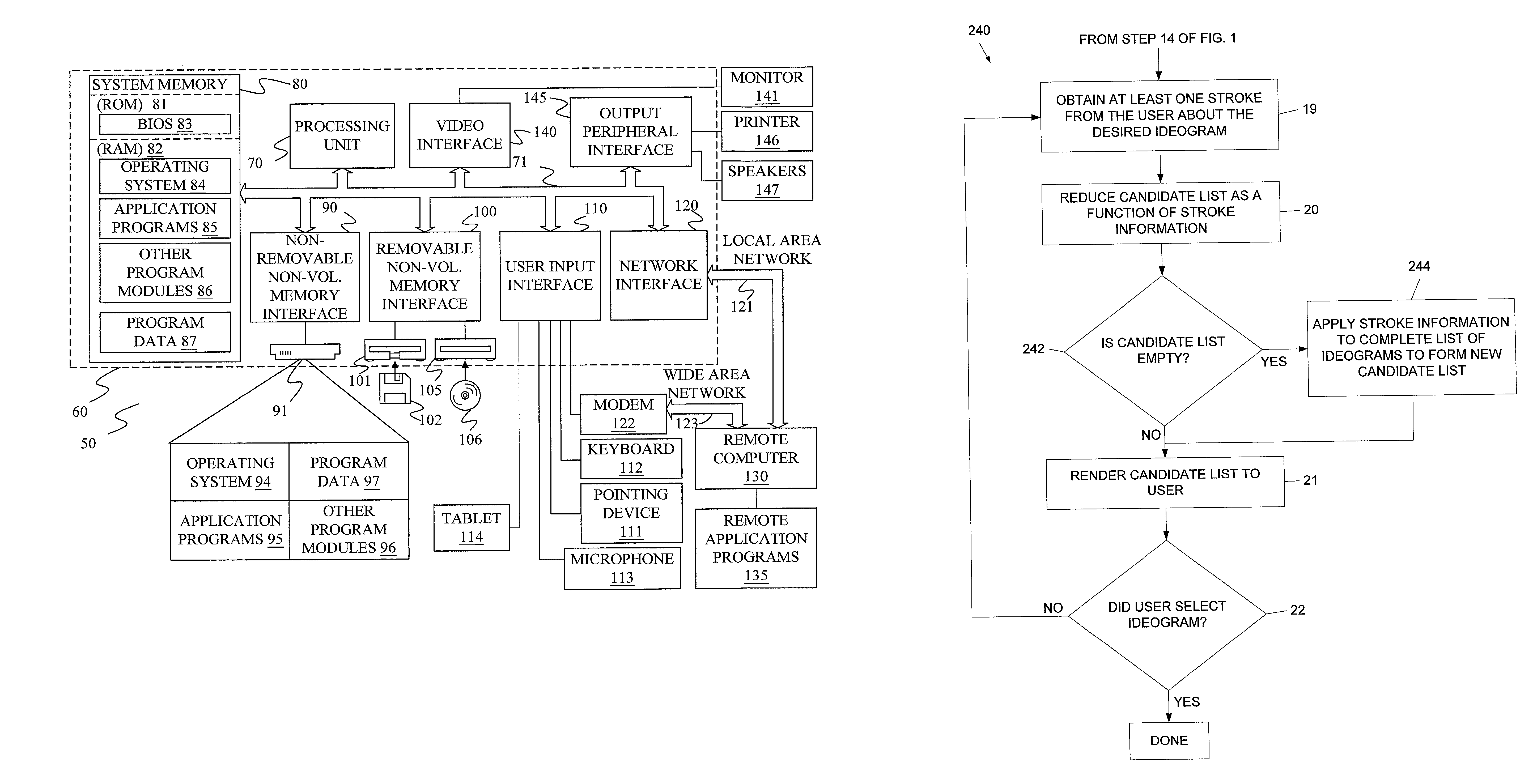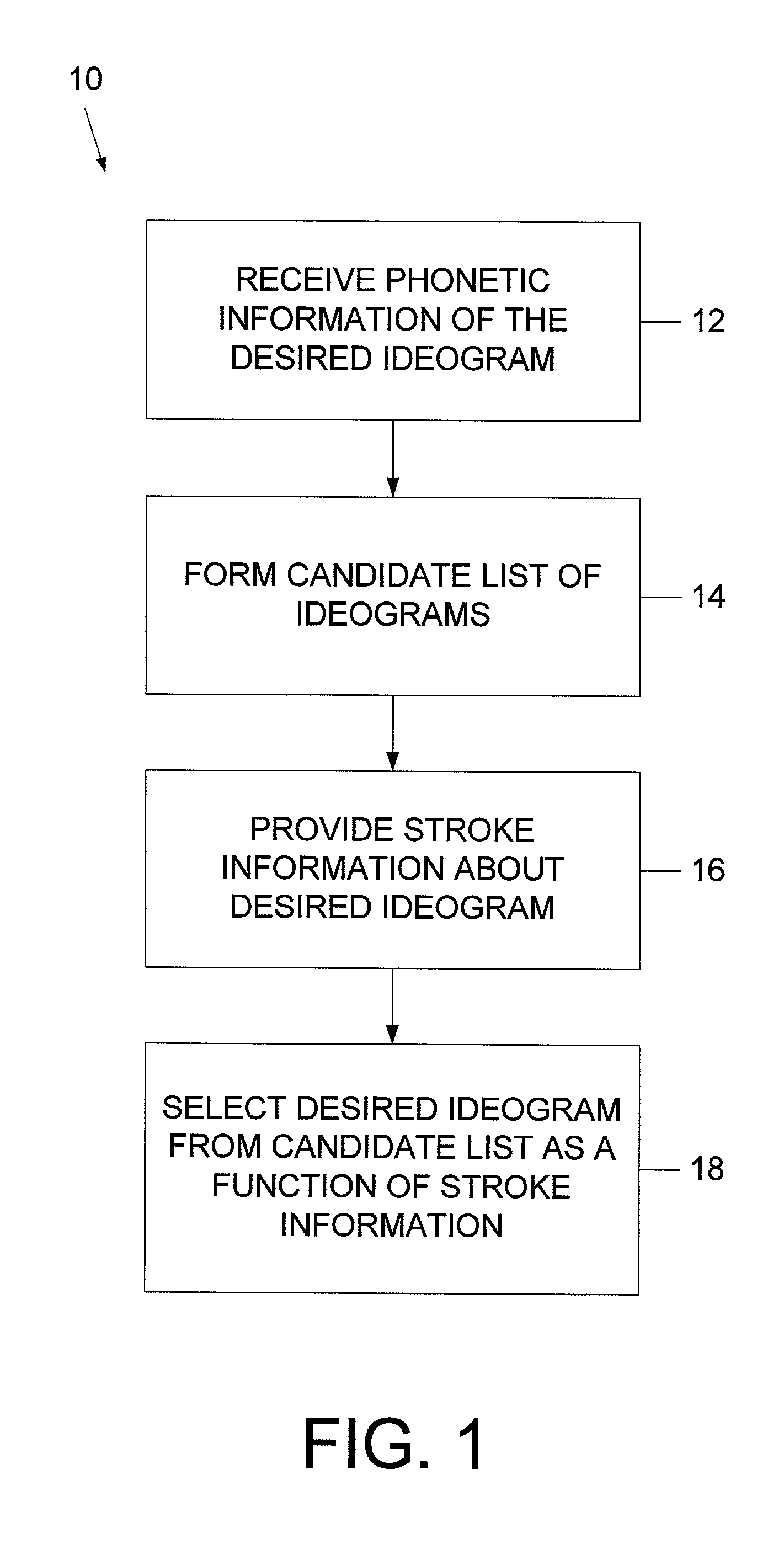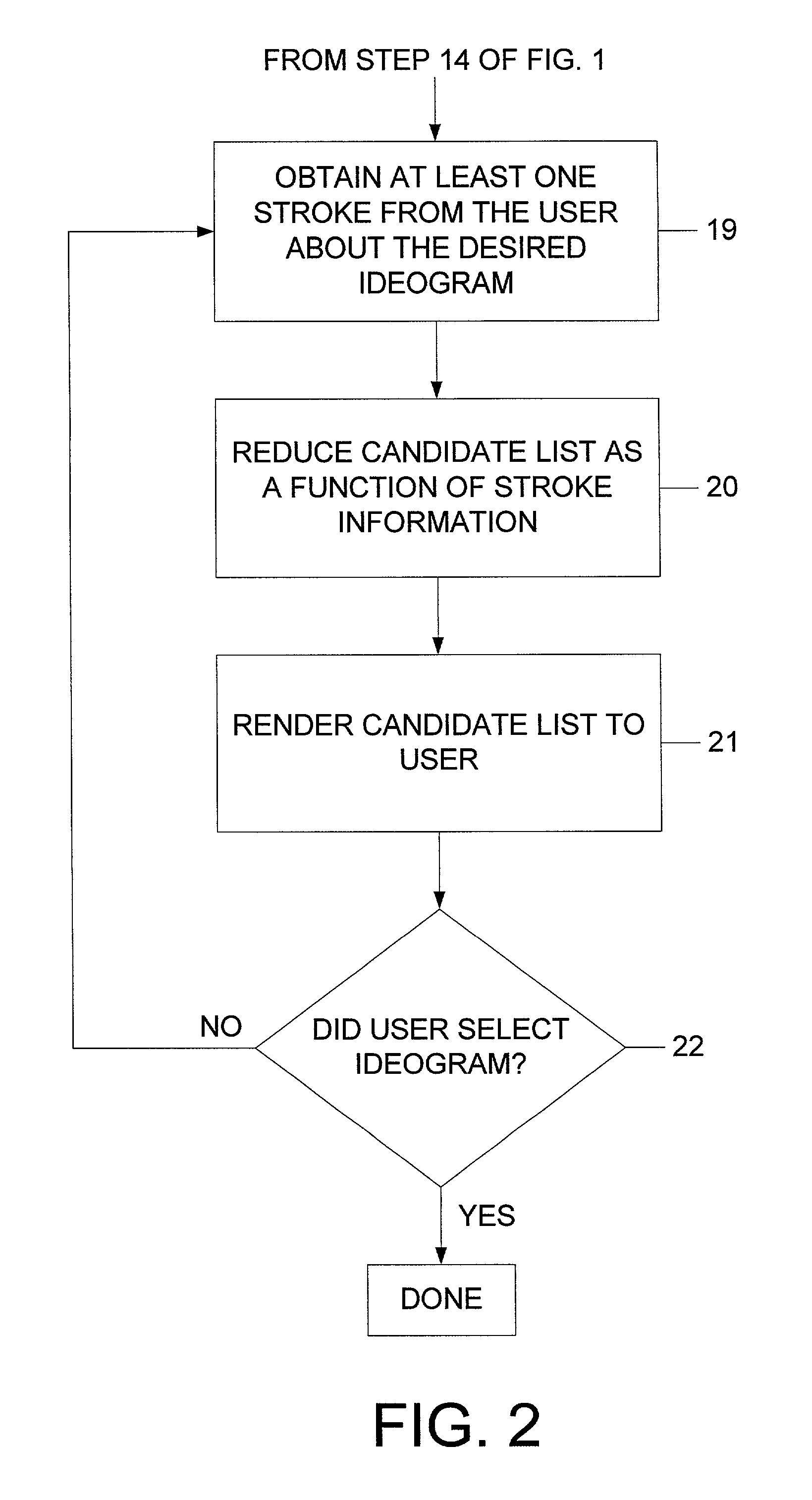Multi-modal entry of ideogrammatic languages
a multi-modal entry and ideogrammatic technology, applied in the field of data processing systems, can solve the problems of time-consuming and cumbersome input of non-phonetic or non-alphabetic languages having ideograms into a computer system, inevitable kana to kanji conversion errors, and the list of homonyms of some pinyin sequences is too long to fit on the entire screen of the visual display, so as to reduce the candidate list
- Summary
- Abstract
- Description
- Claims
- Application Information
AI Technical Summary
Benefits of technology
Problems solved by technology
Method used
Image
Examples
Embodiment Construction
[0019]Referring to FIG. 1, one aspect of the present invention is a method 10 of inputting ideograms in a computer system. The method 10 includes a step 12 of receiving phonetic information of the ideogram typically through a speech recognition system from a user and forming a candidate list of ideograms that may correspond to the phonetic information received at step 14. An example of a candidate list rendered on a display to a user is illustrated in FIG. 9 at 17. Commonly, the ideogram having the highest priority is chosen automatically and saved. However, in the event an error has been made in the automatic selection, the user can then provide “stroke” information of at least one stroke forming the correct ideogram at step 16. The stroke information is used by the computer system to obtain the desired ideogram from the candidate list at step 18.
[0020]Referring to FIG. 2, providing stroke information and obtaining the desired ideogram can include repeating the steps of 19 through ...
PUM
 Login to View More
Login to View More Abstract
Description
Claims
Application Information
 Login to View More
Login to View More - R&D
- Intellectual Property
- Life Sciences
- Materials
- Tech Scout
- Unparalleled Data Quality
- Higher Quality Content
- 60% Fewer Hallucinations
Browse by: Latest US Patents, China's latest patents, Technical Efficacy Thesaurus, Application Domain, Technology Topic, Popular Technical Reports.
© 2025 PatSnap. All rights reserved.Legal|Privacy policy|Modern Slavery Act Transparency Statement|Sitemap|About US| Contact US: help@patsnap.com



